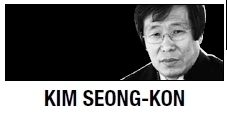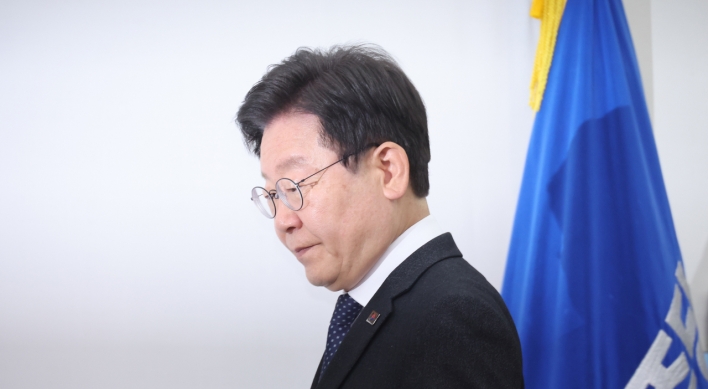[Kim Seong-kon] Korea: a glittering land of literature and the arts
By KH디지털2Published : Feb. 2, 2016 - 17:23
 During the Korean War, and even as recently as the mid-1980s, few people knew where the Korean Peninsula was located. Sadly, Korea was an anonymous land, always left out from discussions about East Asia, which chiefly revolved around China and Japan. Sandwiched between its more famous neighbors, Korea was always invisible, inconspicuous and peripheral.
During the Korean War, and even as recently as the mid-1980s, few people knew where the Korean Peninsula was located. Sadly, Korea was an anonymous land, always left out from discussions about East Asia, which chiefly revolved around China and Japan. Sandwiched between its more famous neighbors, Korea was always invisible, inconspicuous and peripheral. Today, however, Korea is quite well-known globally, both the North and the South. Of course, the two Koreas have become known to the world in different fashions.
North Korea has been spotlighted in the international community due to its sporadic nuclear tests that pose a serious threat to world peace. People frown and click tongues at North Korea’s unpredictable and insolent behavior. Nevertheless, the totalitarian country has also piqued the curiosity of other nations; no one knows exactly what is happening in North Korea. It is no wonder that international publishers are interested in publishing escapee memoirs or travelogues on North Korea that might help shed light on the notoriously insulated and inscrutable nation.
On the contrary, South Korea has become well-known for its miraculous economic success, cutting-edge technology and the widespread Korean cultural phenomena called hallyu. These days, quite a few foreign government officials visit Korea every year to learn the secret recipe to achieving such breathtaking economic growth in a short span of time. When I was dean of Seoul National University’s language school, we had about 150 Malaysian students every year. The Malaysian government selected the best of the best and sent them to Korea on a government scholarship, according to their Look East Policy. They came to Korea to learn the Korean language and advanced IT technology.
These days, I also meet many young foreigners who want to visit Korea, intrigued by the charm of hallyu. A few days ago, I met Yoon Hyung-joo, a member of the legendary duet called Twin Folio together with Song Chang-sik. He said, “I have just returned from my trip to Africa. There I met so many young Africans who wanted to visit Korea. Thanks to hallyu, they admire Korea so much.” I also met many young foreigners who imagined South Korea as a young people’s paradise.
A few days ago, I came across an encouraging article entitled “A Glittering Korea” in the Times Literary Supplement published in the United Kingdom. In the article, Toby Richtig wrote that in the U.K. there is a “seemingly insatiable appetite for publication about the Hermit kingdom” and the ruling dynasty of North Korea. He continued, “But away from escapee memoirs, famine histories and book-length speculations about the robustness, political and gastrointestinal, of the youthful Dear Leader, it is the South that has been gaining headway in the more refined literary arts.”
Indeed, while North Korea has been busy showing off its military muscle, South Korea has emerged on the global stage as a country of charming literary arts and rich cultural heritage. The article points out that LTI Korea plays a vital role in promoting Korean literature overseas. LTI subsidizes the translation and publication of Korean literature into over 30 languages around the world. LTI Korea also runs a Translation Academy that trains professional translators, and publishes a quarterly journal and helps Korean writers to participate in major international literary events.
While congratulating Deborah Smith on receiving the Arts Foundation Award 2016 for her superb translation of Han Kang’s “The Vegetarian,” Lichtig pointed out that Korean literature in the U.K. was now rising.
“Over the past few years there has been a glut of fiction in translation arriving from South Korea, much of it critically acclaimed and some of it even commercially successful,” he wrote.
“This is partly thanks to the indefatigable Dalkey Archive, whose Library of Korean Literature, produced in collaboration with the Literature Translation Institute of Korea, will -- when complete -- amount to an impressive 25 novels and collections of short stories.”
Recently, in the New Yorker Mythili G. Rao wrote that the 25 Dalkey Archive books offered a good starting point for English-speaking readers to learn about Korean literature. Indeed, Dalkey’s Library of Korean Literature series is invaluable for making Korean literature conspicuous and easily accessible in the Anglophone market. Rao also recognizes that South Korea is now visible everywhere, “With a GDP of $1.4 trillion, South Korea has the world’s 13th-largest economy, trailing Australia and Canada.”
Richtig writes that Korea literature, too, has been successful in the U.K.: “And while most of Korean literature’s international success stories have emerged from America -- with its sizeable Korean community -- Britain now has a success story of its own.” He ends his insightful writing by encouraging and congratulating Korean literature’s bright future, writing, “So congratulations to Smith and congratulations to the art of translation and congratulations to Korean literature, which once again seems to be enjoying its place in the sun.” As Richtig puts it in his article’s title, Korean literature in translation will add to South Korea’s glitter.
By Kim Seong-kon
Kim Seong-kon is a professor emeritus of English at Seoul National University and the president of the Literature Translation Institute of Korea. -- Ed.





![[Herald Interview] 'Amid aging population, Korea to invite more young professionals from overseas'](http://res.heraldm.com/phpwas/restmb_idxmake.php?idx=644&simg=/content/image/2024/04/24/20240424050844_0.jpg&u=20240424200058)











![[KH Explains] Korean shipbuilding stocks rally: Real growth or bubble?](http://res.heraldm.com/phpwas/restmb_idxmake.php?idx=652&simg=/content/image/2024/04/25/20240425050656_0.jpg&u=)

